|
| |
 The seabird translocation project The seabird translocation project |
|
|
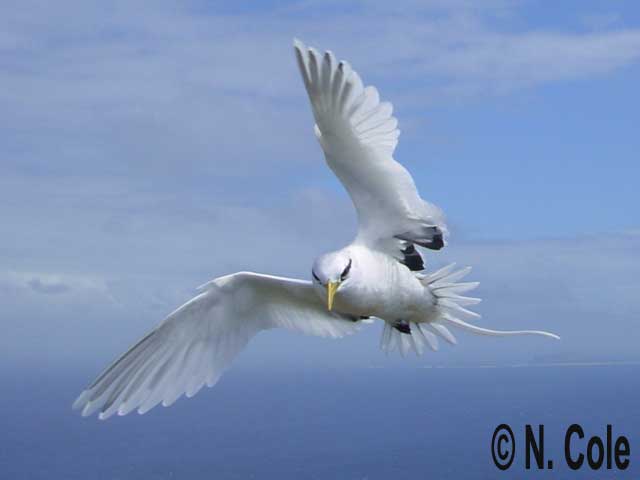
White-tailed Tropicbird
|
|

Red-tailed Tropicbird
|
|
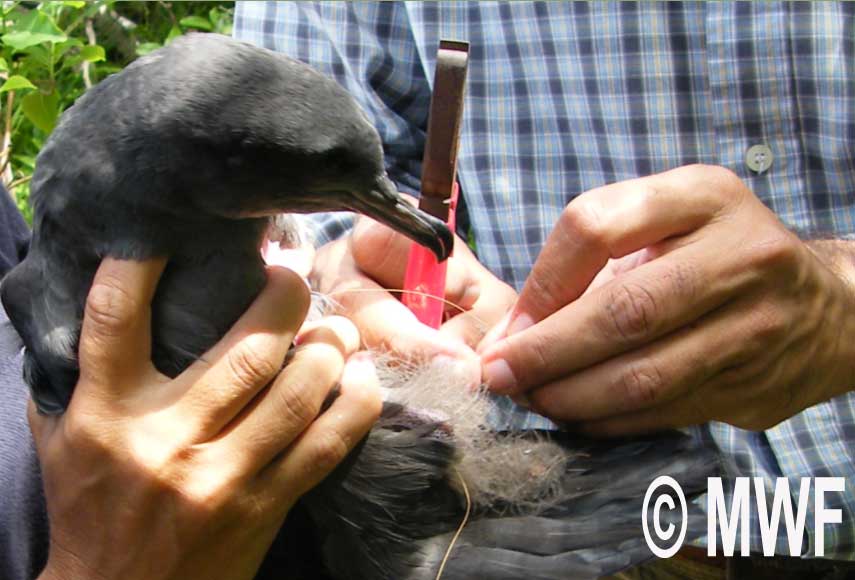
Working with seabirds
|
|
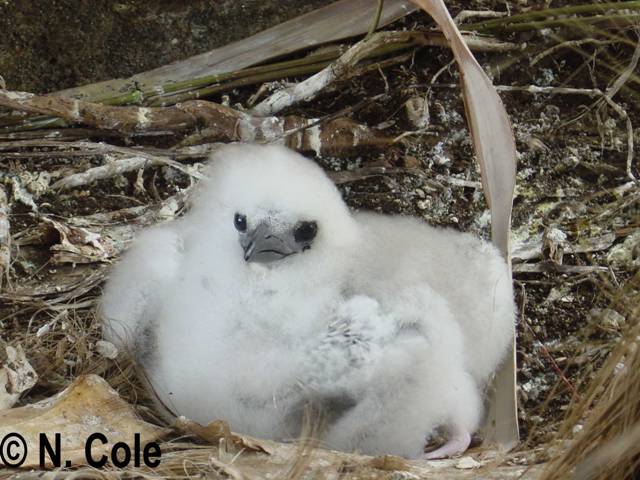
Red-tailed Tropicbird chick
|
|
|
|
The Seabird translocation project began in 2009 and will be a long-term project to help both the local seabird population and Ile aux Aigrettes to fully revive and regenerate. We began with the White-tailed Tropicbird, Red-tailed Tropicbird and Wedge-tailed Shearwater but will include other local species such as the Sooty Tern and Common Noddy (see below for more species information).
Seabirds are incredibly valuable in maintaining healthy ecosystems, especially on islands. They bring in nutrients from the sea with their droppings (guano) and also with their food, eggs and moulted feathers helping to drive important ecological processes, improving soil quality and increasing biological mass and diversity. Seabirds are also important indicators of local oceanic conditions and fish availability. Unfortunately, seabirds are experiencing rapid population declines worldwide, with the numerous threats to their survival including disturbance, alien predators, pollution, unsustainable fishing practices and global warming.
Translocations are becoming a major management tool in improving the distribution of threatened species. Our seabird translocation project aims to re-establish the lost colony of seabirds once found on Ile aux Aigrettes. They are unlikely to return without assistance as the young exhibit high philopatry (having a very strong tendency to return to their birthplace to breed). Wedge-tailed Shearwaters and White-tailed Tropicbirds currently breed successfully on neighbouring islands in the south-east, and White-tailed Tropicbirds inhabit many of the coastal regions in the south. Reasons for the seabird disappearances on Ile aux Aigrettes are unclear but are likely due to native habitat degradation, disturbance, past poaching practices of desirable seabird species, and the impact of introduced predators such as cats and rats.
For the translocations, each year we will collect a small amount (less than 1% of the local population) of young nestlings from islands such as Round Island and Serpent Island where the populations are considered healthy. We then translocate them into nest boxes on protected areas of Ile aux Aigrettes and hand-feed them until they fledge. Whilst on the island they are regularly weighed and measured to build up a database of measurements and behavioural observations that can be compared to their wild counterparts. Not much is known about the movements of young seabirds once they fledge, and they are not usually seen at their breeding grounds for a number of years. After about 4-5 years we hope the surviving seabirds will return to Ile aux Aigrettes and eventually form pairs, begin breeding and build up healthy and self-sustainable populations on the island.
During the study many valuable handling, translocation and feeding techniques will be perfected so they can be used on rarer species of seabirds in the future. We will also gain valuable information on their survival rates, breeding biology, ecology and behaviour. Although these species are relatively common at present, recent data interpretation indicates that breeding success is relatively lower than expected and much more research is needed in this area.
Projects such as these are internationally important as they help fill gaps in knowledge of conservation issues on a global level, such as climate change. This project is supported in kind by the National Parks and Conservation Service regarding the provision of transport and field stations facilities on Round Island. |
|
|

Pair of Red-tailed Tropicbird
|
Fast facts
|
Red-tailed Tropicbird Phaethon rubricauda
- easily distinguished by its long red tail feathers and red bill
- average lifespan is16 years
- solitary in habit
- exhibits aerial displays during breeding season
- average adult weight 800g
|
|
|
|
|
|
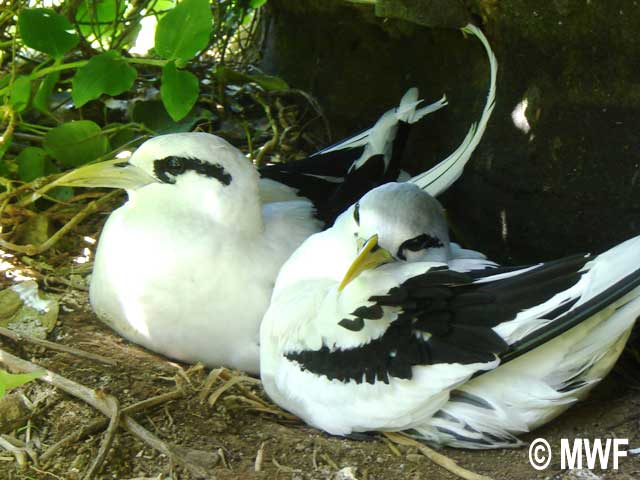
Pair of White-tailed tropicbird
|
Fast facts
|
White-tailed Tropicbird Phaethon lepturus
- recognized by the long white tail feathers and yellow bill
- solitary in habit
- pairs exhibit aerial displays
- first breeding attempts at 2–5 years of age
- average adult weight 350g
|
|
|
| |
|
|
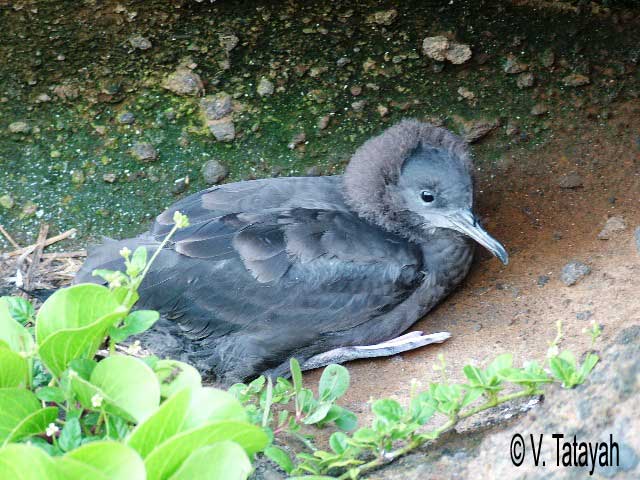
Wedge-tailed Shearwater
|
Fast facts
|
Wedge-tailed Shearwater Puffinus pacificus
|
- a medium-sized seabird with dark plumage
- colonial burrow nesters
- breeds annually
- nocturnal at nesting sites, apart from when laying or incubating
- first breeding attempts at 3–6 years of age
- average adult weight 390g
|
|
|
|
| |
|
|
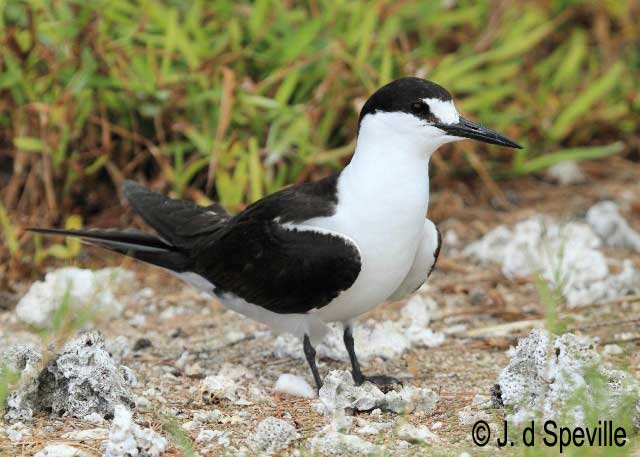
Sooty Tern
|
Fast facts
|
Sooty Tern Onychoprion fuscatus (formerly Sterna fuscata)
|
- a large tern, with black upperparts and white underparts, a black bill and black legs
- colonial at nesting site
- nests in scrapes on the ground
- breeds annually
- average adult weight 200g
|
|
|
|
| |
|
|
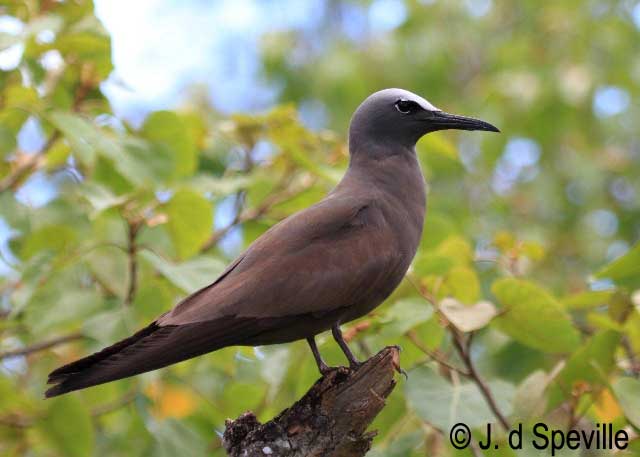
Common Noddy
|
Fast facts
|
Common Noddy Anous stolidus
|
|
- also called the Brown Noddy because of its brown plumage
- colonial
- breeds annually
- generally nests above ground
- average adult weight 185g
|
|
|
|
| |
|
|
|
|
|
|